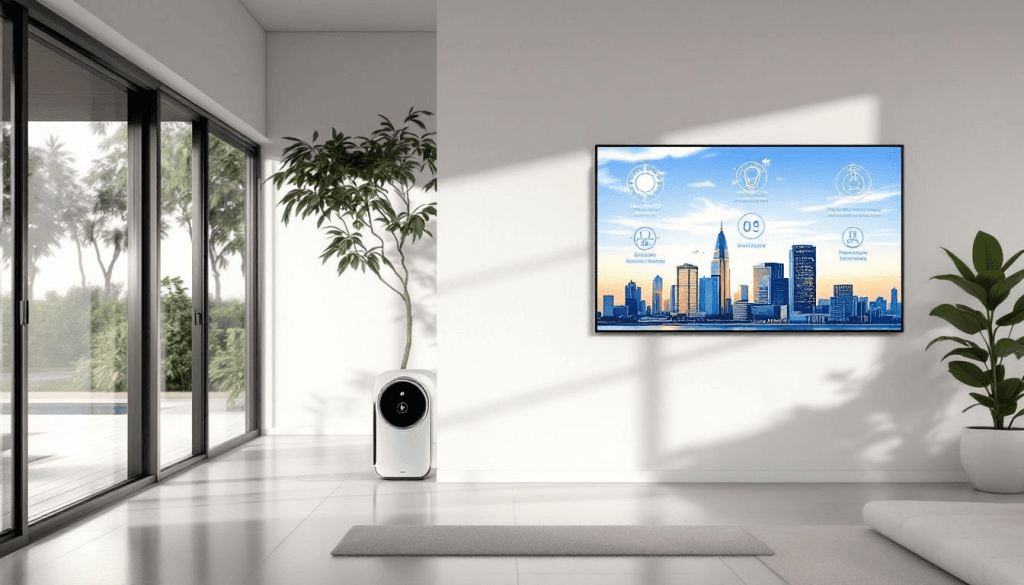Water poured into Madrika Gray's apartment from a busted pipe last December, ruining her furniture and puddling onto the worn tiles. Then there was mold, which grew in dark, fine-haired blots on her furniture and made her clothes smell no matter how much she washed them.
The Hidden Crisis in Rental Properties

Rental property interior showing potential mold and water damage concerns
Mold problems in rental properties represent a significant but often overlooked health crisis affecting tenants across the country. When water damage occurs, it can quickly lead to mold growth that threatens both property and health, yet many tenants find themselves with limited legal recourse.
Common Scenarios Leading to Mold Issues
Water Damage Events
- Burst pipes causing flooding
- Roof leaks during storms
- Plumbing failures in walls or floors
- HVAC condensation issues
- Poor drainage around the building
Delayed Response
Often, the time between water damage and proper remediation allows mold to establish itself:
- Furniture and belongings become contaminated
- Clothing absorbs musty odors
- Indoor air quality deteriorates
- Health symptoms begin to develop
Health Impacts on Tenants
Tenants exposed to mold in their living spaces may experience:
Immediate Symptoms
- Respiratory irritation
- Coughing and sneezing
- Eye and skin irritation
- Headaches and fatigue
Long-term Health Effects
- Development of asthma
- Chronic respiratory problems
- Allergic sensitization
- Potential immune system impacts
Legal Challenges for Tenants
Limited Legal Protections
Many jurisdictions lack specific laws addressing mold in rental properties, leaving tenants vulnerable:
- No mandatory disclosure requirements for known mold issues
- Limited landlord obligations for mold remediation
- Difficult legal remedies for health damages
- Expensive testing and legal costs for tenants
Jurisdictional Gaps
Local and state governments often lack:
- Authority to enforce mold standards
- Resources for inspection and enforcement
- Standardized remediation requirements
- Tenant protection mechanisms
What Tenants Can Do
Document Everything
- Photograph damage immediately after water events
- Keep records of all communications with landlords
- Document health symptoms and medical visits
- Save receipts for damaged belongings
Seek Professional Help
- Independent mold testing to document contamination
- Medical evaluation for health symptoms
- Legal consultation to understand rights
- Tenant advocacy groups for support and resources
Know Your Rights
- Research local tenant protection laws
- Understand lease obligations for both parties
- Know when withholding rent may be legally justified
- Understand options for lease termination
The Role of Professional Testing
Independent mold testing can provide crucial evidence:
- Objective documentation of contamination levels
- Species identification for health risk assessment
- Legal-grade reports for potential litigation
- Baseline data for tracking remediation success
Preventing Mold Issues
Tenant Responsibilities
- Report water damage immediately to landlords
- Maintain proper ventilation in living spaces
- Monitor humidity levels and use dehumidifiers when needed
- Clean and dry wet materials promptly
Landlord Responsibilities
- Prompt response to water damage reports
- Professional water extraction and drying
- Proper mold remediation when contamination occurs
- Preventive maintenance to avoid water intrusion
The Need for Better Protections
The case of tenants like Madrika Gray highlights the need for:
Legislative Action
- Mandatory disclosure of known mold issues
- Required remediation standards for rental properties
- Tenant rights during remediation processes
- Health protections for vulnerable populations
Industry Standards
- Professional remediation requirements
- Post-remediation testing to verify cleanup
- Indoor air quality standards for rentals
- Regular inspections for high-risk properties
Resources for Affected Tenants
Immediate Steps
- Seek medical attention for health symptoms
- Document all damage and communications
- Contact local tenant rights organizations
- Consider professional mold testing
- Consult with qualified attorneys
Long-term Support
- Join tenant advocacy groups
- Support legislative efforts for better protections
- Share experiences to raise awareness
- Seek compensation for damages when possible
Conclusion
The story of tenants dealing with mold issues in rental properties reveals significant gaps in legal protections and enforcement mechanisms. While some moisture and occasional water damage may be inevitable in buildings, the response to these events is critical for preventing health problems.
Tenants facing mold issues should document everything, seek professional testing when possible, and explore all legal options available in their jurisdiction. At the same time, there's a clear need for stronger legal protections and mandatory standards to ensure that all tenants have the right to live in healthy environments.
Everyone deserves to live in a healthy environment, especially in their homes, including rental properties. Until better protections are in place, tenants must be proactive in protecting their health and rights when mold issues arise.
